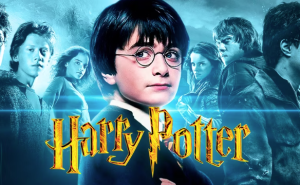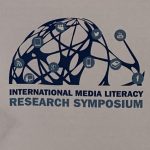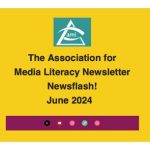Exploring the Codes and Conventions of Fantasy in Literature and Film through Harry Potter
Exploring the Codes and Conventions of Fantasy in Literature and Film through Harry Potter: A Lesson in Integration by Greta Smelko OCT Brant Haldimand Norfolk Catholic District School Board
This lesson was created as the culminating project in the Association for Media Literacy’s Fall 2022 Additional Qualifications Course.
The AML is grateful to Greta Smelko for her creativity and permission to share this lesson. Please credit Greta Smelko when you share the lesson.
A special quality of this lesson is that it is scalable: although it was designed for Grade 8 students, it can be easily adapted for Primary or Middle School students, as well as Secondary (9-12). It may take the form of a final production project, or be adapted to a series of small proposals and sketches.
Lesson Plan and Timing/Duration
This will be a series of activities preparing Grade 8 Language Arts students for a culminating production unit on their class novel.
The lesson will take two and a half 100 minute block periods.
Students will learn about literary fantasy genres through watching Harry Potter and the Philosopher’s Stone.
Students will learn about fantasy film codes and conventions through watching Harry Potter and the Philosopher’s Stone.
Students will learn about media from study of screenplay and storyboard construction.
Students will learn about media by creating a screenplay or storyboard for a fantasy novel adaptation (in culminating project to follow)
Learning Goals and Key Concepts:
To understand that:
Media constructs reality (how codes and conventions of film such as camera angles construct fantastical elements of film)
Codes and conventions of print fantasy genres differ from those of film.
Media constructs a version of reality (how codes and conventions of film blend the fictional with non-fictional)
Audiences negotiate meaning (how certain film elements engage audiences)
Media communicate value messages (how social values shift in response to events)
Each medium has a unique aesthetic form (how the printed word differs from the moving image in their ability to engage audiences)
Central narratives of oral and print literature are driven by archetypes such as The Hero’s Journey
Curriculum Expectations Language Arts, Grade 8 (Ontario):
Oral Communication:
2.2 demonstrate an understanding of appropriate speaking behaviour in most situations, using a variety of speaking strategies and adapting them to suit the purpose and audience
2.3 communicate in a clear, coherent manner, using a structure and style appropriate to the purpose, the subject matter, and the intended audience
Reading:
1.1 read a wide variety of increasingly complex or difficult texts from diverse cultures, including literary texts
1.4 demonstrate understanding of increasingly complex and difficult texts by summarizing important ideas and explaining how the details support the main idea
1.5 develop and explain interpretations of increasingly complex or difficult texts using stated and implied ideas from the texts to support their interpretations
1.7 analyse a variety of texts, including complex or difficult texts, and explain how the various elements in them contribute to meaning and influence the reader’s reaction
2.1 analyse a variety of text forms and explain how their particular characteristics help communicate meaning, with a focus on literary texts such as a memoir
2.4 identify a range of elements of style – including symbolism, irony, analogy, metaphor, and other rhetorical devices – and explain how they help communicate meaning and enhance the effectiveness of texts
Media Literacy:
1.1 explain how a variety of media texts address their intended purpose and audience
1.2 interpret increasingly complex or difficult media texts, using overt and implied messages as evidence for their interpretations
1.3 evaluate the effectiveness of the presentation and treatment of ideas, information, themes, opinions, issues, and/or experiences in media texts
2.1 explain how individual elements of various media forms combine to create, reinforce, and/or enhance meaning
2.2 identify the conventions and techniques used in a variety of media forms and explain how they help convey meaning and influence or engage the audience
Description:
Students will read a class fantasy novel (The Barren Grounds), and independently read a graphic fantasy novel of their own choice. The following lessons will comprise a film study of Harry Potter and the Philosopher’s Stone to complement the unit. For the film study, they will review fantasy codes and conventions, the hero’s journey, and archetypes. Students then review codes and conventions, camera angles, and archetypes as well as explore how the text, script and film differ; in the second lesson, students more closely examine the “Troll scene” through the script, storyboard, and the scene itself. The lessons set students up for their culminating work which has them creating a script or storyboard for a scene from a chapter of their class novel study (The Barren Grounds).
Student Activities
Day One (1.5 100-minute block)
Discussion:
What are the qualities and characteristics that make up a hero?
What is the hero’s journey?
How might fantasy lend itself well to a hero’s journey?
What might be some codes/conventions of the fantasy film genre (eg, clothing; music)?
Activity:
Students explore what text in the novel, Harry Potter and the Philosopher’s Stone, would be necessary to include in a film script (known as a screenplay) and what could be removed.
They annotate the first chapter of the novel Harry Potter and the Philosopher’s Stone.
Key questions:
- What parts of the text could be removed? Why might you remove them?
- Are there any portions of the text you might not include in a script but still think are important for the director/producer/designers to know about?
Examining Screenplay:
Resource: StudioBinder https://www.studiobinder.com/blog/best-free-movie-scripts-online/
- Students review annotated chapters with the script
Key questions:
- What parts of the original text are kept in the screenplay?
- Why might some dialogue be kept, and other be modified?
- Is there any new content? Why might it have been added?
- The first chapter of the text is 18 pages, and the screenplay is 2 pages. Why might there be such a difference between the two?
Film viewing:
Watch the opening scene of Harry Potter and the Philosopher’s Stone (4 minutes)
Watch the scene a few times, later with the screenplay and novel alongside. Each successive viewing will build understanding of what screenwriters added or omitted (and why).
Key questions:
- If students had done sketches of the characters – are their images like the characters on the screen?
- How were the fantastical elements of the novel addressed in the film?
- What codes and conventions of fantasy were presented in the film? Did you notice any of the stages of the Hero’s Journey?
Consolidation: Review codes and conventions of fantasy; predict what will happen next in the film – in terms of stages in the Hero’s Journey.
Day Two (1 100-minute block)
Discussion:
Screenplays and storyboards: information; purpose; Examples for illustration.
Key Questions:
- Who might make use of the storyboards in the creation of films?
- How do the storyboards help add clarity to a screenplay?
Activity:
Students read the book’s description of the troll (Chapter 10).
Students sketch a visual interpretation of the character.
Mini Lesson:
“8 key Camera Shots and Angles in Film.”
Key Question:
- What are the impacts of certain camera angles and shots on the audience?
Activity:
Students read through the screenplay excerpt that corresponds with Chapter 10.
Key Questions:
- What camera angles and shots are indicated, if any, for the scene?
- What camera angles and shots might be effective for this scene?
Storyboards:
Students examine the 4-panel storyboard for this scene. https://bicknellem.wordpress.com/2013/09/27/harry-potter-storyboard-study/.
(Option here for students to sketch an alternative storyboard panel that suggests alternative narratives).
Key Questions:
- How might the storyboard complement the screenplay?
- Who might find the information in the storyboard useful?
Activity:
Students watch the Troll scene film clip several times.
Key Questions:
- Closely follow the film with the screenplay: why might any dialogue changes have occurred?
- How does the film align with the storyboard? Were there changes, why might the changes have occurred?
- What camera angles and shots were used in the scene? How do they influence our viewing of the scene?
Consolidation:
Students identify the fantasy film codes and conventions they found within the scene.
Students discuss where the scene might fit into Harry’s Hero’s Journey.
Students prepare to apply their learnings to their class novel study, The Barren Grounds.
Assessment Strategies
For learning: reviewing the codes and conventions of a fantasy; discussion regarding the chapter vs the script and script vs storyboard
As learning: visualization based on read material; highlighting sections of text that might be omitted for a script – collaborative discussion. Reflection logs and notes on differences among forms and content of each medium; connection to ‘hero’s journey’ elements.; rough sketches of storyboard ideas.
Of learning: this lesson is a preparation for a project in which students create their own script, storyboard, etc. of a chapter from The Barren Grounds – the class fantasy novel. It forms part of the total assessment for the final stage.
As with the Harry Potter lesson, the culminating project can be scaled down or up according to student and teacher needs.
Accommodations
- PowerPoint content will be added as an HTML page in Brightspace so students can access the information later.
- A student handout with key information for students. Some guided questions to help focus the learning. Scribing can be provided for students for this section of the notes.
- Use of closed captions on the video so students can follow the dialogue.
- Annotating the document with the students as we go through the script or storyboard.
- Using examples from films and/or video clips that have been watched in class to help solidify understanding.
- Allow choice in the final assessment piece for students to highlight understanding with a skill set they are comfortable with.

 *
*
